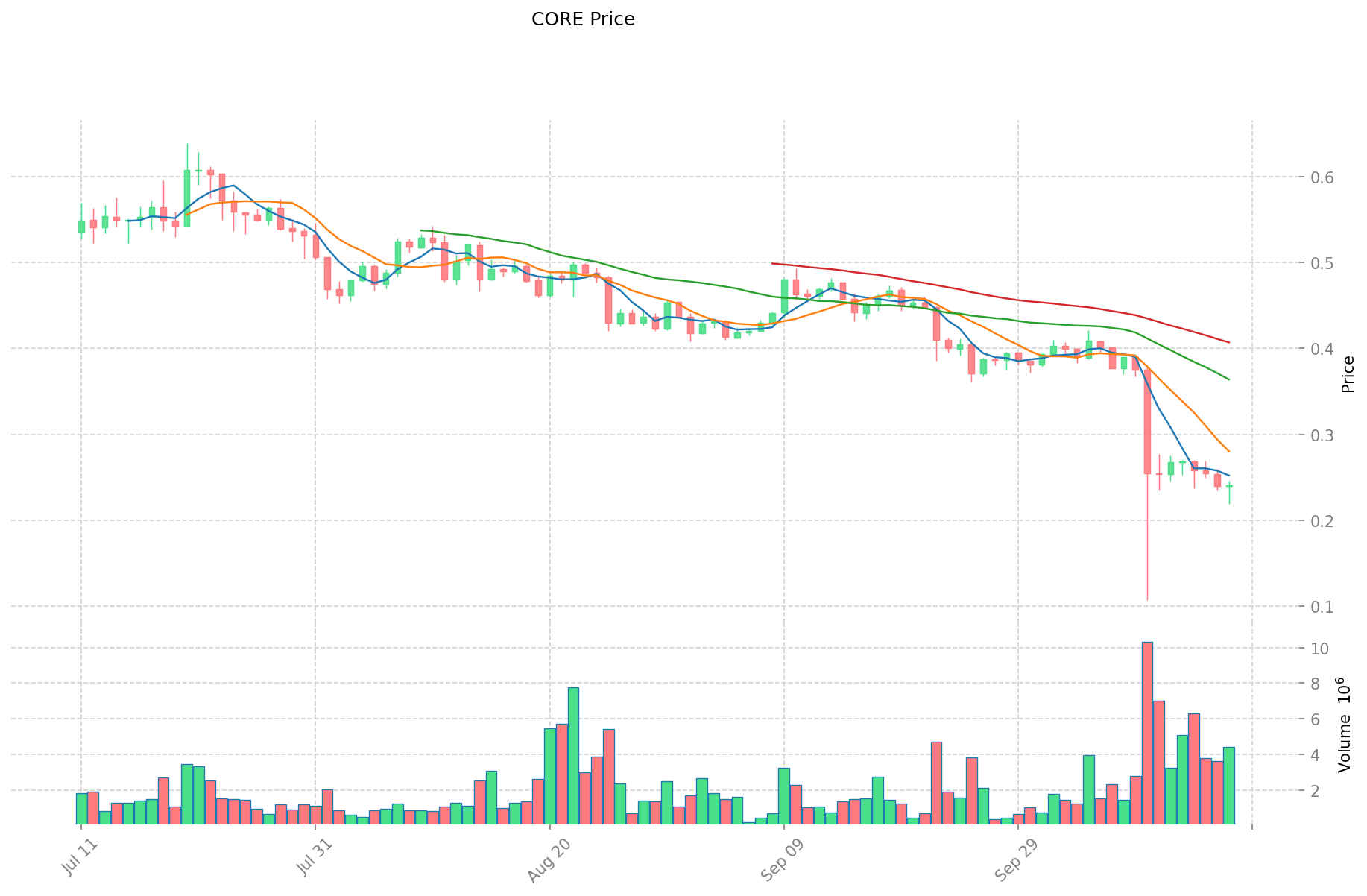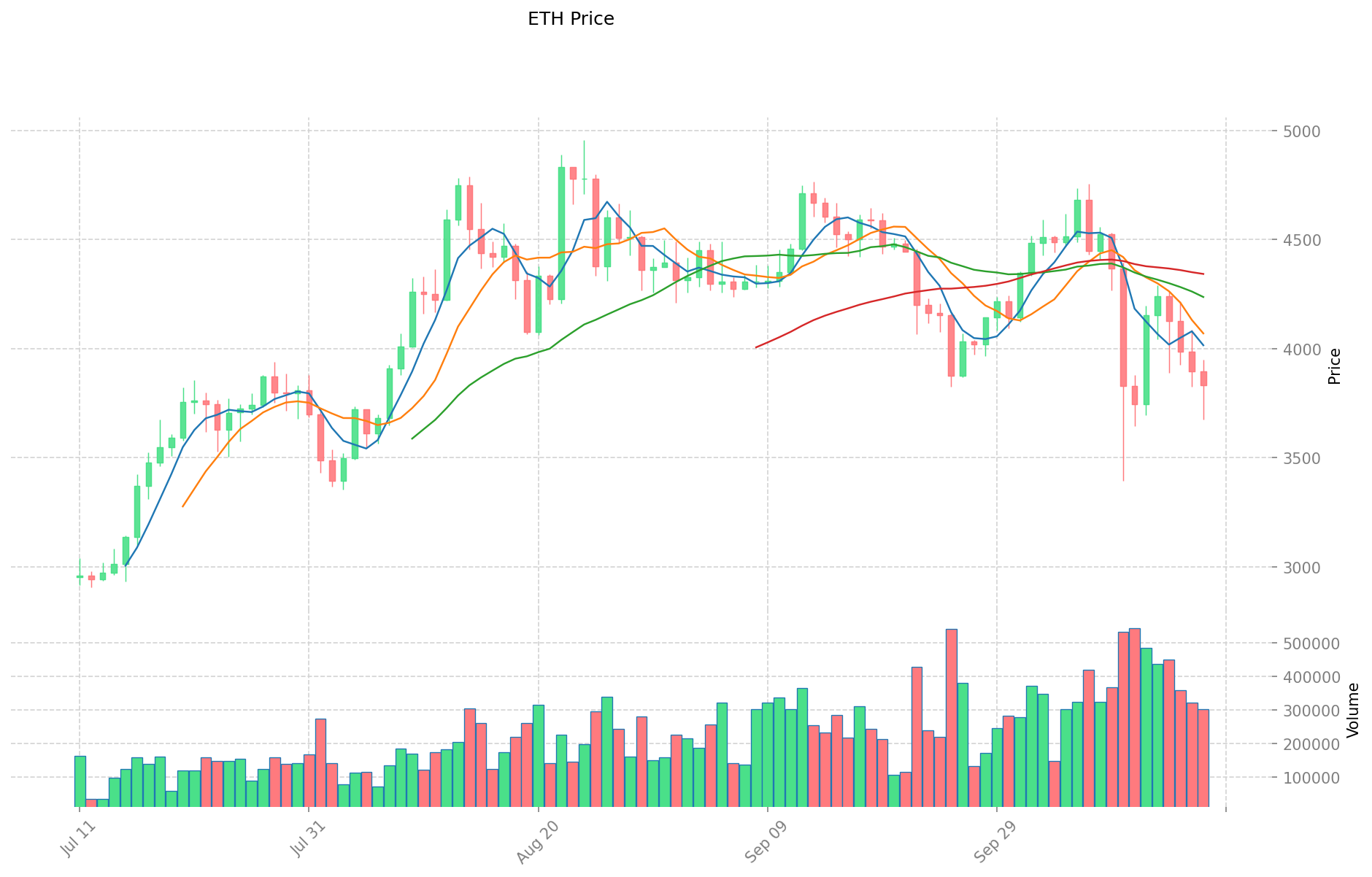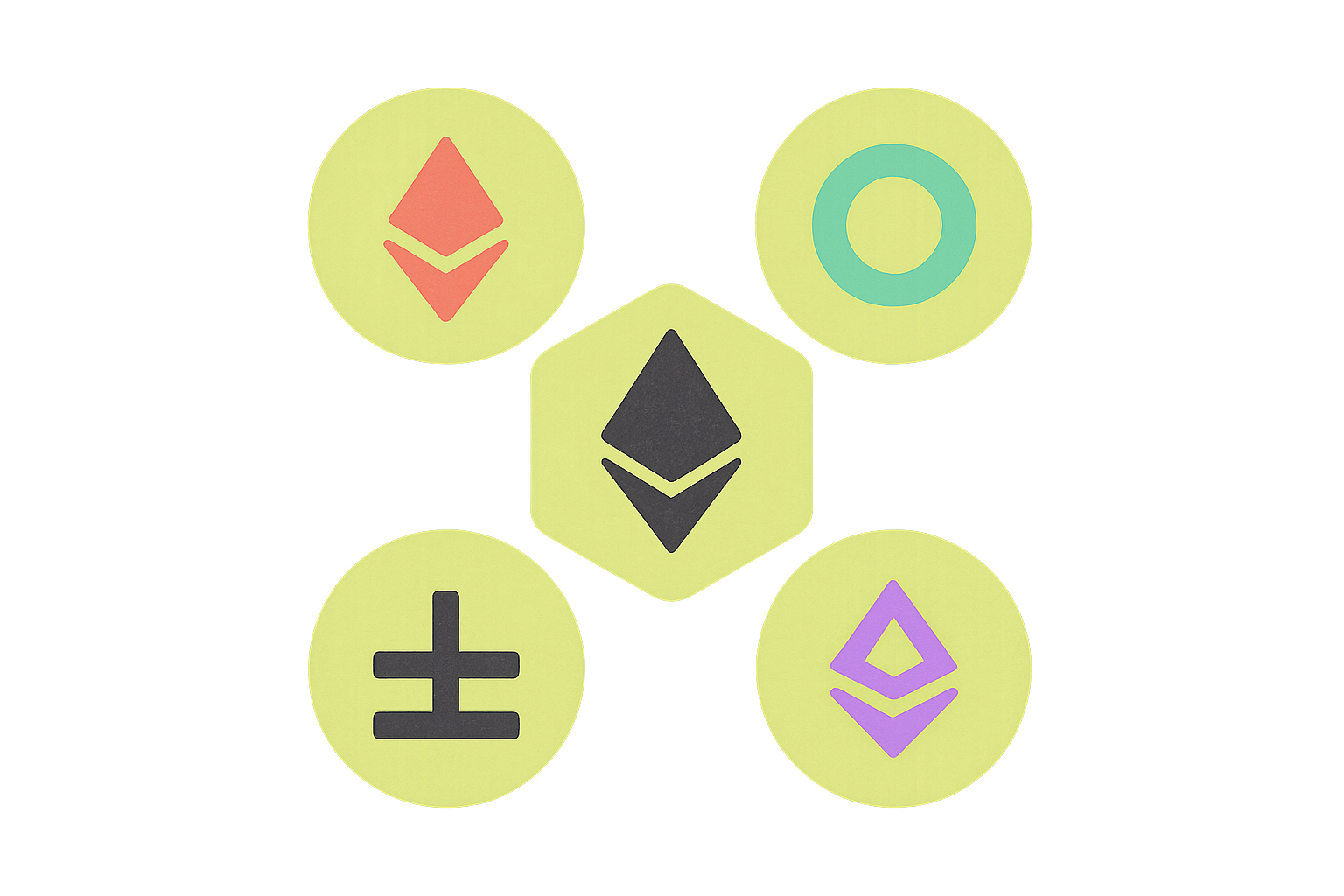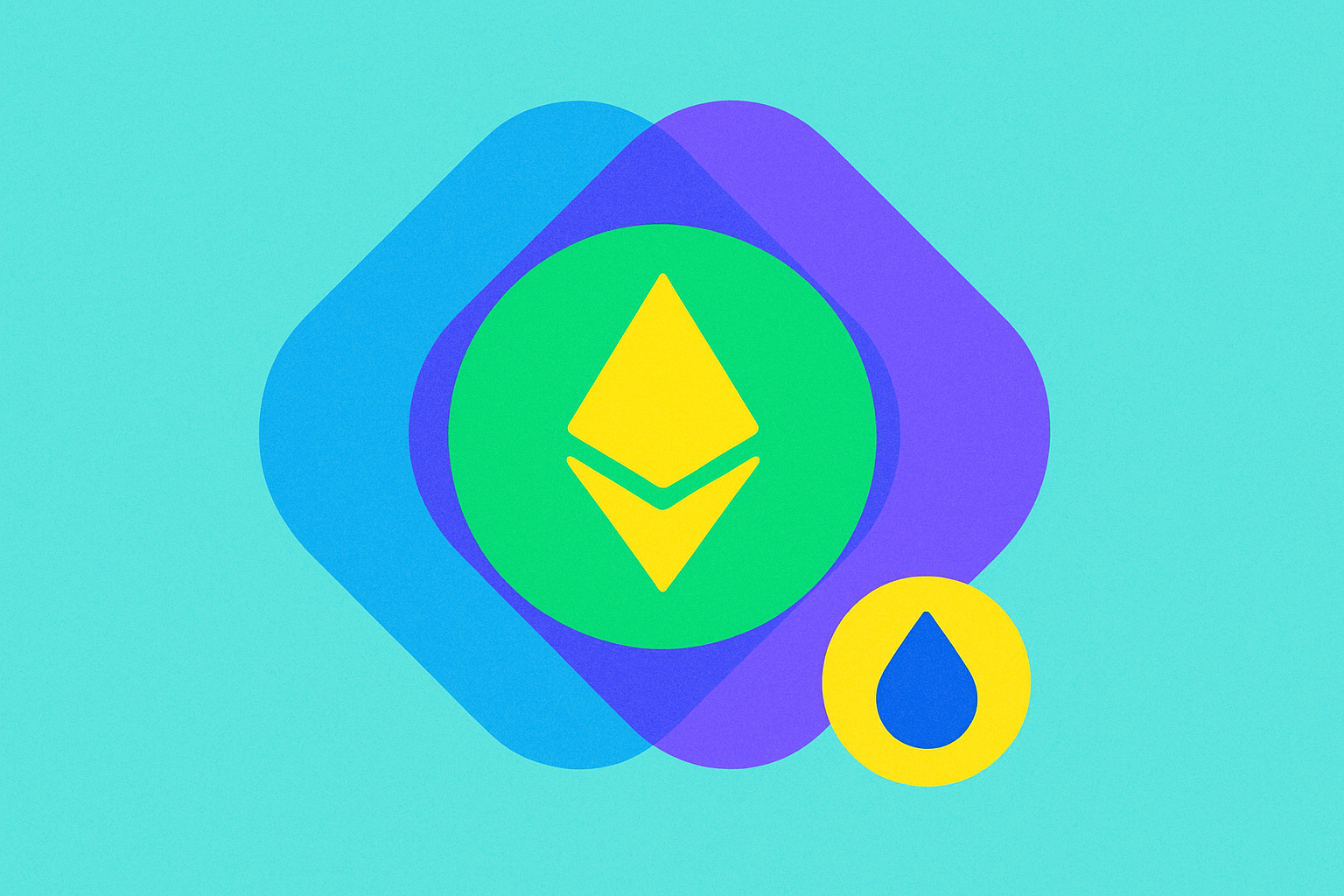CORE ve ETH: DeFi Ekosistemlerinde Ölçeklenebilirlik Çözümlerinin Karşılaştırılması


Giriş: CORE ve ETH Yatırımı Karşılaştırması
Kripto para piyasasında CORE ile ETH'nin karşılaştırılması, yatırımcıların göz ardı edemeyeceği temel bir başlıktır. Bu iki varlık; piyasa değeri sıralaması, kullanım alanları ve fiyat performansı bakımından belirgin şekilde ayrışırken, kripto varlık ekosisteminde de farklı rollere sahiptir.
Core DAO (CORE): Piyasaya çıktığı günden itibaren, delegeli BTC madenciliği hash'i ile delegeli proof-of-stake'in birleşimini sağlayan özgün "Satoshi Plus" konsensüs mekanizması sayesinde piyasada ilgi görmektedir.
Ethereum (ETH): 2015'ten bu yana akıllı sözleşmeler ve merkeziyetsiz uygulamalar (DApps) için en çok tercih edilen platformlardan biri olmuş, küresel işlem hacmi ve piyasa değeri açısından zirvede yer almıştır.
Bu içerikte, CORE ve ETH'nin yatırım değerleri; geçmiş fiyat hareketleri, arz mekanizmaları, kurumsal benimseme, teknolojik ekosistem ve gelecek öngörüleri açısından kapsamlı şekilde analiz edilerek yatırımcıların en çok merak ettiği soruya odaklanılacaktır:
"Şu anda hangisi daha avantajlı bir yatırım?"
I. Fiyat Geçmişi Karşılaştırması ve Mevcut Piyasa Durumu
CORE ve ETH Tarihsel Fiyat Eğilimleri
- 2023: CORE, 8 Şubat 2023'te 14,48 $ ile en yüksek seviyesine ulaştı.
- 2025: ETH, 25 Ağustos 2025'te 4.946,05 $'a çıkarak yeni bir zirve gördü.
- Karşılaştırmalı analiz: Son piyasa döngüsünde CORE, 14,48 $ zirveden 0,2395 $ seviyesine geriledi; ETH ise zirve sonrası 3.822,01 $ ile daha dengeli bir performans sergiledi.
Mevcut Piyasa Durumu (18 Ekim 2025)
- CORE güncel fiyat: 0,2395 $
- ETH güncel fiyat: 3.822,01 $
- 24 saatlik işlem hacmi: CORE 1.022.130,64 $ / ETH 1.144.953.452,62 $
- Piyasa Duyarlılık Endeksi (Korku & Açgözlülük Endeksi): 22 (Aşırı Korku)
Canlı fiyatları görüntülemek için tıklayın:
- CORE güncel fiyatı için Piyasa Fiyatı
- ETH güncel fiyatı için Piyasa Fiyatı


II. CORE ve ETH Yatırım Değerini Belirleyen Temel Faktörler
Arz Mekanizması Karşılaştırması (Tokenomik)
-
CORE: Sabit bir arz sınırı yoktur; işlem ücretlerinin %85'i yakılır, %15'i doğrulayıcılara dağıtılır.
-
ETH: EIP-1559 sonrasında deflasyonist modelde taban işlem ücretleri yakılır, doğrulayıcılar ise tip ve blok ödülleri alır.
-
📌 Geçmiş model: Deflasyonist mekanizmalar, ağ aktivitesinin yoğun olduğu dönemlerde fiyat üzerinde yukarı yönlü baskı oluşturur; ETH'nin yakım sistemi zamanla CORE'un yeni modeline kıyasla daha fazla kıtlık yaratabilir.
Kurumsal Benimseme ve Piyasa Uygulamaları
- Kurumsal portföyler: ETH, ETF'ler, saklama çözümleri ve şirket hazinesiyle kurumsal düzeyde kabul görmüştür; CORE ise kurumsal tanınırlık sürecinde.
- Kurumsal uygulamalar: ETH, kurumsal blockchain çözümleri, DeFi ve ödeme sistemlerinde liderdir; CORE zincirler arası birlikte çalışabilirlik sunar fakat gerçek dünyada henüz yeterince test edilmemiştir.
- Regülasyon konumu: ETH, birçok ülkede emtia olarak daha net bir statüye sahiptir; CORE'un regülasyon durumu ise hâlâ belirsizdir.
Teknik Gelişim ve Ekosistem İnşası
- CORE teknik yenilikler: Ölçeklenebilirlik ve zincirler arası entegrasyona odaklanırken güvenliği ön planda tutar.
- ETH teknik gelişimi: Merge sonrası Surge, Verge, Purge ve Splurge aşamalarıyla L2 çözümleri ve sharding ile ölçeklenebilirliği artırır.
- Ekosistem karşılaştırması: ETH, DeFi TVL, NFT pazarları ve dApp geliştirmede olgun ekosistemiyle öne çıkar; CORE'un ekosistemi ise gelişim aşamasındadır.
Makroekonomik Faktörler ve Piyasa Döngüleri
- Enflasyon performansı: ETH, deflasyonist mekanizması ile anti-enflasyonist etkiler göstermiştir; CORE'un geçmiş verisi ise yeterli değildir.
- Para politikası etkisi: Her iki varlık da küresel riskli varlıklarla korelasyon gösterir; FED politikaları likiditeyi ve risk iştahını etkiler.
- Jeopolitik faktörler: ETH, küresel çapta sınır ötesi işlemlerde yaygın şekilde kullanılır; CORE'un zincirler arası kabiliyeti, parçalı regülasyon ortamında avantaj oluşturabilir.
III. 2025-2030 Fiyat Tahmini: CORE vs ETH
Kısa Vadeli Tahmin (2025)
- CORE: Temkinli 0,16-0,24 $ | İyimser 0,24-0,29 $
- ETH: Temkinli 2.299-3.833 $ | İyimser 3.833-4.255 $
Orta Vadeli Tahmin (2027)
- CORE, büyüme aşamasına girebilir; tahmini fiyat aralığı 0,25-0,42 $
- ETH, konsolidasyon dönemine girebilir; tahmini fiyat aralığı 2.361-4.770 $
- Temel itici güçler: Kurumsal sermaye girişi, ETF, ekosistem gelişimi
Uzun Vadeli Tahmin (2030)
- CORE: Temel senaryo 0,36-0,40 $ | İyimser senaryo 0,40-0,45 $
- ETH: Temel senaryo 4.182-5.808 $ | İyimser senaryo 5.808-8.306 $
Feragatname
CORE:
| Yıl | Tahmini En Yüksek Fiyat | Tahmini Ortalama Fiyat | Tahmini En Düşük Fiyat | Değişim Oranı |
|---|---|---|---|---|
| 2025 | 0,28764 | 0,2397 | 0,162996 | 0 |
| 2026 | 0,316404 | 0,26367 | 0,2346663 | 10 |
| 2027 | 0,42055365 | 0,290037 | 0,24653145 | 21 |
| 2028 | 0,41569553025 | 0,355295325 | 0,255812634 | 48 |
| 2029 | 0,4240449703875 | 0,385495427625 | 0,2852666164425 | 60 |
| 2030 | 0,453342622887 | 0,40477019900625 | 0,3561977751255 | 69 |
ETH:
| Yıl | Tahmini En Yüksek Fiyat | Tahmini Ortalama Fiyat | Tahmini En Düşük Fiyat | Değişim Oranı |
|---|---|---|---|---|
| 2025 | 4.254,7965 | 3.833,15 | 2.299,89 | 0 |
| 2026 | 5.216,7254925 | 4.043,97325 | 2.830,781275 | 5 |
| 2027 | 4.769,2598523875 | 4.630,34937125 | 2.361,4781793375 | 21 |
| 2028 | 5.357,777257473375 | 4.699,80461181875 | 3.618,8495511004375 | 22 |
| 2029 | 6.587,716124386341875 | 5.028,7909346460625 | 3.168,138288827019375 | 31 |
| 2030 | 8.305,802547208169128 | 5.808,253529516202187 | 4.181,942541251665575 | 51 |
IV. Yatırım Stratejisi Karşılaştırması: CORE ve ETH
Uzun Vadeli vs Kısa Vadeli Yatırım Stratejisi
- CORE: Zincirler arası entegrasyon ve ekosistem gelişimine odaklanan yatırımcılar için uygundur.
- ETH: İstikrar ve anti-enflasyonist özellik arayan yatırımcılar için idealdir.
Risk Yönetimi ve Varlık Dağılımı
- Temkinli yatırımcılar: CORE %10 / ETH %90
- Agresif yatırımcılar: CORE %30 / ETH %70
- Koruma araçları: Stablecoin tahsisi, opsiyonlar, çapraz para portföyleri
V. Potansiyel Risk Karşılaştırması
Piyasa Riski
- CORE: Daha düşük piyasa değeri ve likidite nedeniyle yüksek volatilite
- ETH: Genel kripto piyasa trendleri ve makroekonomik etkilere karşı hassas
Teknik Risk
- CORE: Ölçeklenebilirlik ve ağ istikrarı
- ETH: Madencilik gücünün merkezileşmesi, güvenlik açıkları
Regülasyon Riski
- Küresel regülasyon politikalarının her iki varlığa etkisi farklılık gösterir.
VI. Sonuç: Hangisi Daha Avantajlı?
📌 Yatırım Değeri Özeti:
- CORE avantajları: Zincirler arası entegrasyon, gelişen ekosistemde büyüme potansiyeli
- ETH avantajları: Yerleşik ekosistem, kurumsal benimseme, deflasyonist model
✅ Yatırım Tavsiyesi:
- Yeni yatırımcılar: Yoğun şekilde ETH ağırlıklı portföyde CORE'a küçük bir pay ayırabilir
- Deneyimli yatırımcılar: Risk toleransına göre dengeleyerek ETH ağırlığını artırabilir
- Kurumsal yatırımcılar: Likidite ve regülasyon netliği için ETH'yi tercih etmeli, CORE'u ise fırsat için izlemelidir
⚠️ Risk Uyarısı: Kripto para piyasası çok değişkendir. Bu makale yatırım tavsiyesi değildir. None
VII. Sıkça Sorulan Sorular
S1: CORE ve ETH'nin yatırım potansiyeli bakımından ana farkları nelerdir? C: CORE, zincirler arası entegrasyon ve gelişen ekosistemde büyüme potansiyeli sunarken; ETH ise istikrar, yerleşik ekosistem, kurumsal benimseme ve deflasyonist mekanizma ile öne çıkar.
S2: CORE ve ETH'nin arz mekanizmaları nasıl farklılık gösterir? C: CORE'un sabit arz sınırı yoktur ve işlem ücretlerinin %85'i yakılır; ETH'de ise taban işlem ücretleri yakılır ve doğrulayıcılar tip ile blok ödülleri alır.
S3: Son piyasa döngüsünde hangi kripto para daha iyi fiyat performansı gösterdi? C: ETH, zirve sonrası değerini koruyarak daha dirençli kalırken; CORE ise zirveden ciddi bir düşüş yaşadı.
S4: CORE ve ETH'nin yatırım değerini etkileyen ana faktörler nelerdir? C: Arz mekanizması, kurumsal benimseme, piyasa uygulamaları, teknik gelişim, ekosistem inşası ve makroekonomik faktörler başlıca etkenlerdir.
S5: Uzun vadeli fiyat tahminlerinde CORE ve ETH nasıl karşılaştırılır? C: 2030'da CORE'un 0,36-0,45 $; ETH'nin ise 4.182-8.306 $ aralığına ulaşması beklenmektedir.
S6: CORE ve ETH için hangi yatırım stratejileri önerilir? C: Temkinli yatırımcılar CORE'a %10, ETH'ye %90 pay ayırabilir; agresif yatırımcılar ise %30 CORE ve %70 ETH'yi seçebilir. Yeni yatırımcılar ETH'ye odaklanmalı, deneyimli yatırımcılar risk toleransına göre denge kurabilir.
S7: CORE ve ETH yatırımlarında öne çıkan başlıca riskler nelerdir? C: CORE, düşük piyasa değeri ve likidite nedeniyle yüksek volatilite ve teknik riskler taşır; ETH ise genel kripto piyasası, makroekonomik etkenler ve madencilik gücünün merkezileşmesi risklerine açıktır.

2025 POL Fiyat Tahmini: Polygon’un Yerel Token’ı İçin Potansiyel Büyüme Dinamikleri ve Piyasa Eğilimlerinin Analizi

2025 OP Fiyat Tahmini: Optimism’in Layer 2 (Katman 2) Ölçekleme Çözümlerindeki Uzun Vadeli Değer Potansiyelinin Analizi

2025 LINEA Fiyat Tahmini: Layer 2 Çözümüne Yönelik Piyasa Trendleri, Teknik Gelişmeler ve Benimsenme Unsurlarının Analizi

LightLink (LL) iyi bir yatırım mı?: Bu yükselen blockchain platformunun DeFi ekosistemindeki potansiyelini analiz ediyoruz

YFII ve OP: DeFi Ekosisteminde Getiri Farming Protokollerinin Rekabeti

Arbitrum (ARB) iyi bir yatırım mı?: Gelişen kripto ekosisteminde bu Layer 2 ölçeklendirme çözümünün potansiyelini değerlendirmek

Blockchain Düğümlerini Anlamak: Detaylı Bir Açıklama

Kripto para ile gerçekleştirebileceğiniz alışveriş seçeneklerini keşfetmek

ERC-20 Uyumlu Cüzdanların Kullanımı İçin Rehber

Velodrome Finance Platform üzerinden avantajları en üst düzeye çıkarmanın rehberi

Ethereum için Yenilikçi Likit Staking Çözümleri





